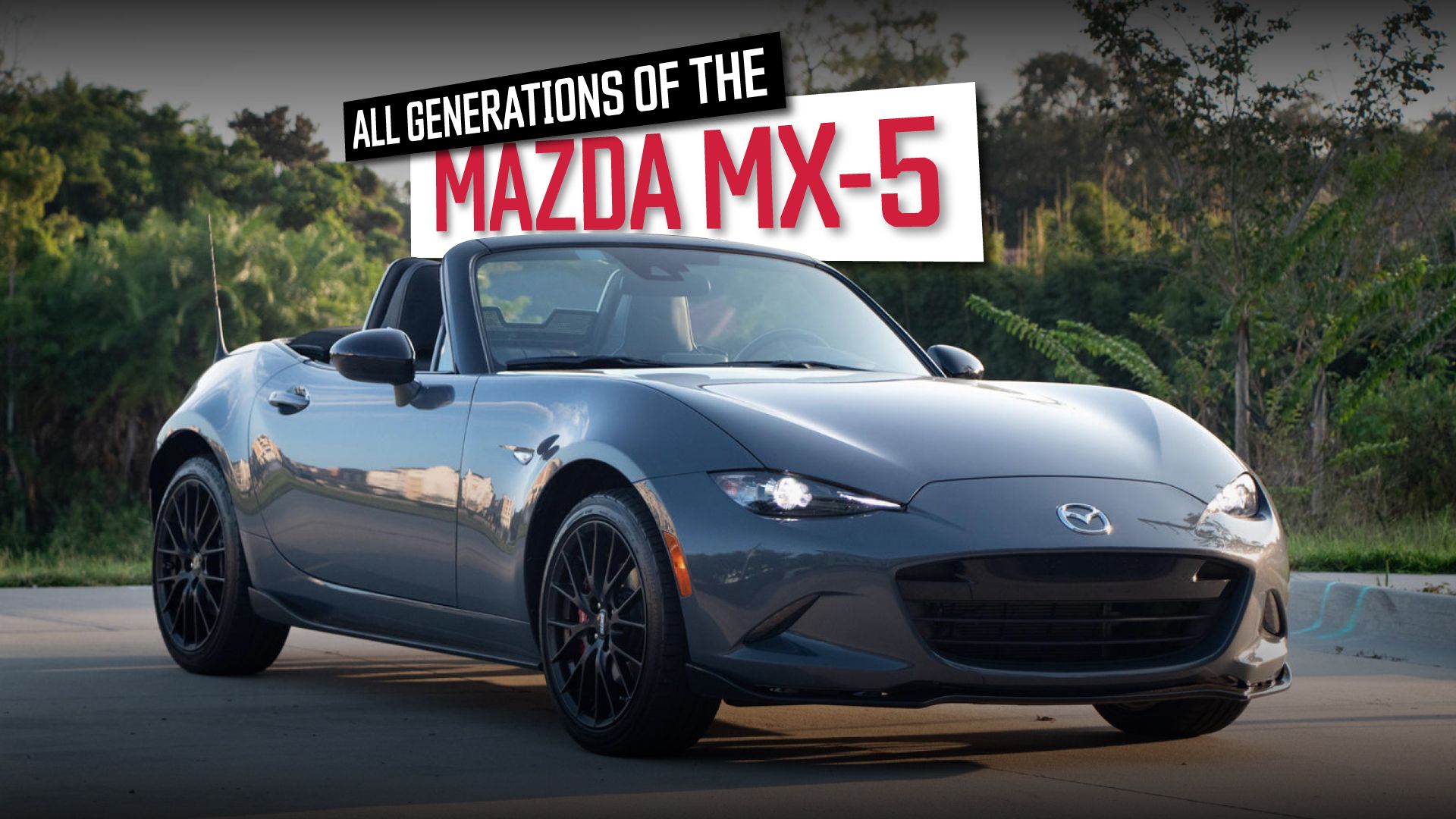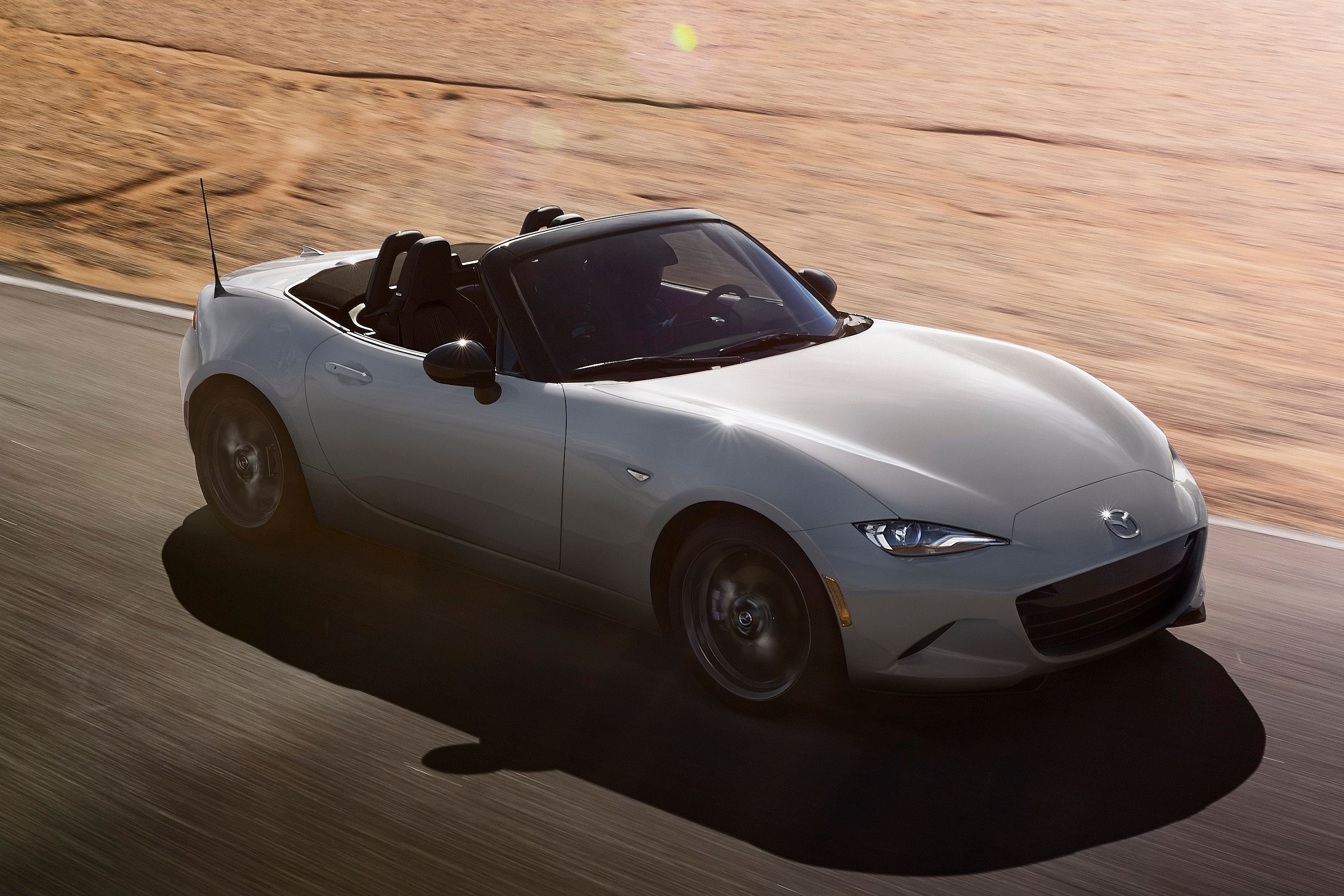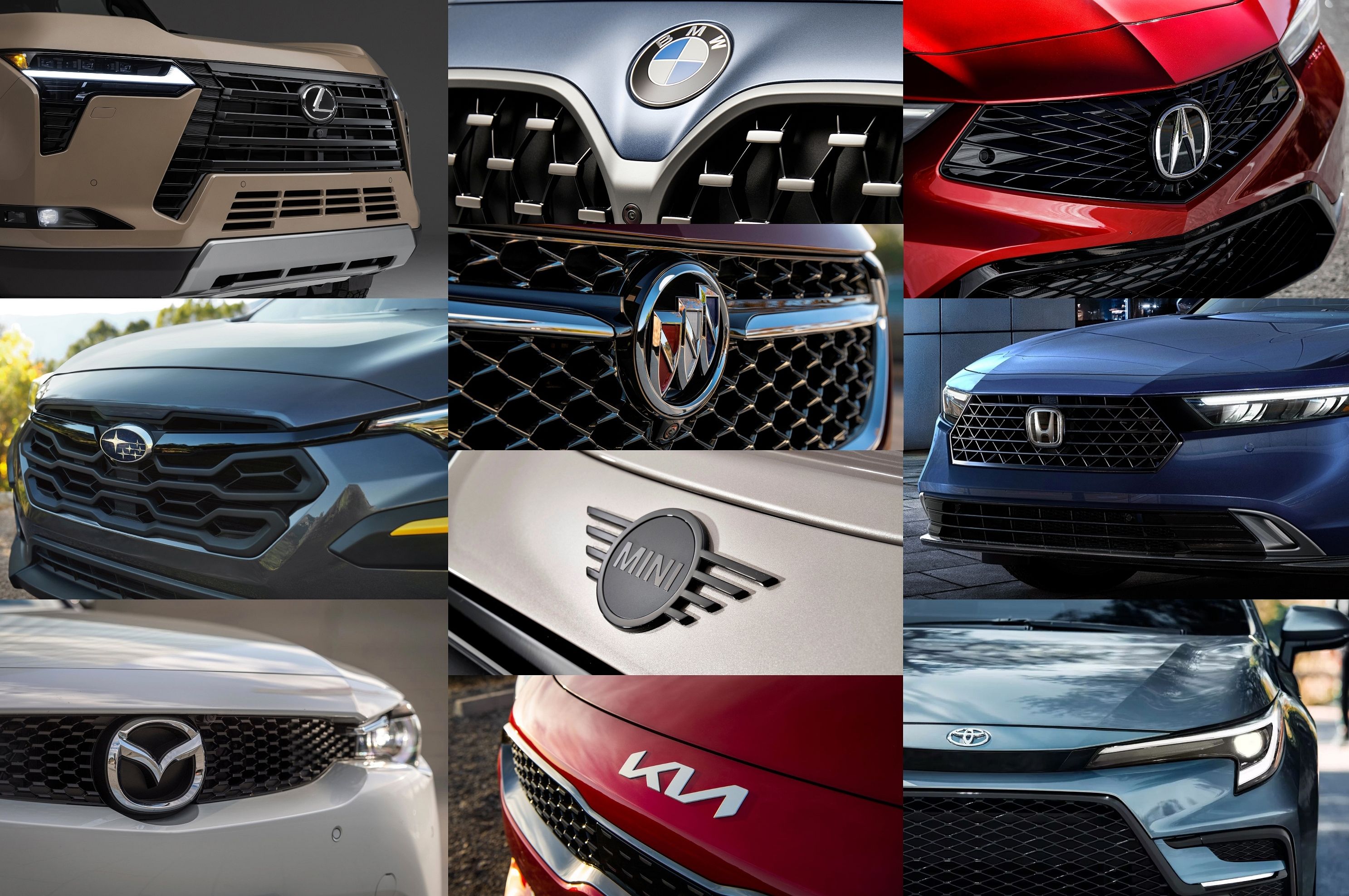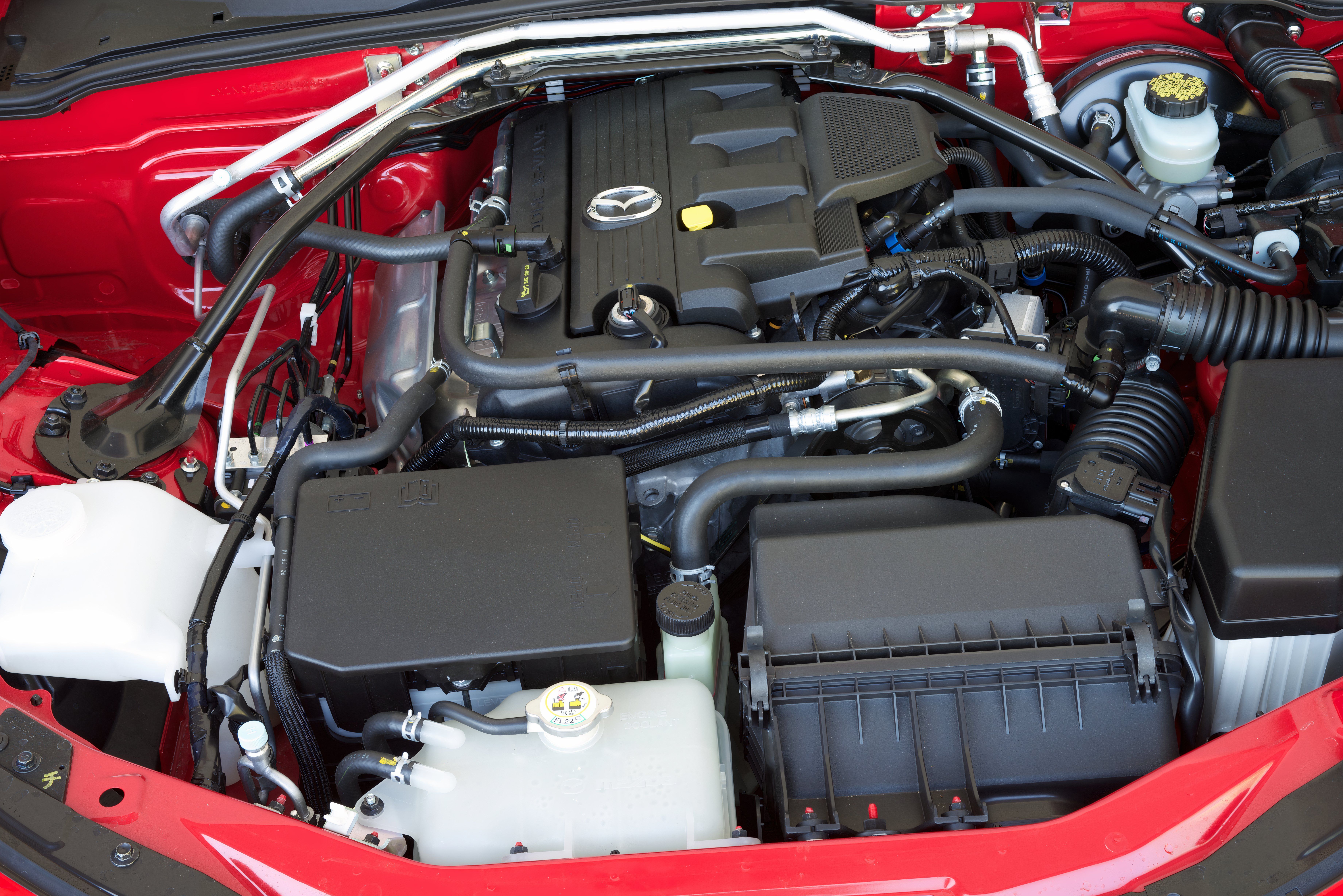While often an afterthought to more popular Japanese brands like Toyota and Honda, Mazda has proven itself to be just as reliable as these automotive industry juggernauts time and time again, also proving something of a formal and informal racing pedigree along the way. The Miata platform, for example, is a favorite among engine swappers and drag racers looking to maximize power-to-weight ratios, while the brand overall posts an oft-forgotten win at the 1991 24 Hours of Le Mans via the rotary-powered Mazda 787B. Both accolades stand as a testament to the reliability the brand is known for in the racing world, but what about regular Joes just looking for something they can always count on turning over?
Related
First-Gen Mazda MX-5 Miata: Pop-Up Headlights And 9 Other Features That Made It Legendary
From its timeless design to its robust mechanicals and spirited handling, there’s a lot to love about the first Miata.
While the Miata (known as the MX-5 in Japan) may be better known for its status as an aftermarket blank canvas, the stock vehicles are not only incredibly safe but incredibly reliable as well. Simple technology and an aversion to flying too close to the sun in general across the platform’s generations play major roles in this, but the 2013 Mazda MX-5 is specifically regarded as one of, if not the most reliable single model year the platform has ever seen. While a popular word-of-mouth claim among motorists, there’s also significant documentation from highly regarded sources that further supports this conclusion.
Mazda’s General Reliability
The Miata was first introduced in 1989 and has since gone on to become the best-selling two-seat convertible sports car in global history. As of early 2016, general production was said to have exceeded one million, proving the staying power the platform’s reliability has afforded it over the decades. Some even go as far as to say Mazda, in general, is more reliable as a brand than Toyota, citing repair frequency and low costs as being as low as, if not lower than, Toyota’s. The 2013 model year of the MX-5’s third generation saw this reliability distilled into its purest form, with one of the most complained-about aspects of the vehicle being how simplistic its stock technology is. However, as seen in recent months with Tesla’s various troubles, less technology can often be a very good thing.
The 2013 MX-5 Has No Complaints
It’s unrealistic to assume a car will have no problems whatsoever, so taking a look at its closest neighbors within the same generation helps to highlight what problems owners may encounter and which ones they are likely to avoid. One of the most significant in the latter category is the 2012 model year’s AC compressor failure issue, which is admittedly a costly repair. Per CarComplaints, the repair is cited as costing more than $1,200. The 2011 model year, meanwhile, has one annoying but not major problem in premature wear to upholstery and one slightly more impactful problem with gasoline splashing out of the tank when full.

Related
Mazda MX-5 Miata Generations: Everything You Need To Know In One Place
The enduring MX-5 has stuck to its values of lightweight RWD driving pleasure from the day it went on sale to the current fourth generation.
Thankfully, these seem to have been fixed for the 2013 Mazda MX-5 model year, with no such reports being filed against the sports car.
The final two model years of the generation saw much more significant issues than the above arise, starting with the 2014 model year’s paint chipping at just 22,250 miles. While several other factors can contribute to this, having paint issues at just over 20,000 miles into ownership is difficult to attribute wholly and solely to a lack of care for the vehicle.
It is also worth noting that none of the issues owners complained about stopped the car from driving.
NHTSA Agrees On Mazda’s Reliability
The NHTSA website, meanwhile, sees the 2013 Mazda MX-5 boast an incredibly impressive zero recalls whatsoever. It’s worth emphasizing that the vehicle’s generation and production years put it right in the “danger zone” for the Takata airbag inflator recall, yet again emphasizing how the 2013 seems to just sit perfectly betwixt and out the way of a litany of issues affecting its contemporaries. Especially encouraging is that the NHTSA’s official website has zero reported investigations on the vehicle, yet again emphasizing just how reliable the vehicle is and how few issues come up with the platform. While not quite as significant but still meaningful, the NHTSA also has plenty of documented communication with Mazda, suggesting that if there were a reason to put out a recall on the vehicle, the agency would have done so by now.

Related
What Are America’s Lightest Sports Cars?
Every car wishes they were a part of this group.
The NHTSA’s registered complaints for the vehicle also reflect its reliability, with one of only two reported focusing on the removal of an airbag deactivation switch. The complaint specifically references the fact that Mazda’s website and the vehicle’s owner’s manual state it should be there, but Mazda seemingly removed it without making this information available to the public. The second complaint is somewhat more concerning, claiming that an owner had their vehicle accelerate despite the brake pedal being pressed, needing to shift into neutral gear to decelerate and turn off the vehicle. However, it’s said that the failure occurred intermittently and that the affected vehicle was not diagnosed or repaired, suggesting this to be a one-off issue likely caused by some external force. In other words, the fact that only one complaint of its kind can be found suggests it to be something prospective purchasers can disregard.
2013 Mazda MX-5’s Biggest “Flaw” Is Its Powertrain
|
Engine |
MZR 2.0-liter four-cylinder engine |
|---|---|
|
Power |
167 horsepower @ 7000rpm |
|
Torque |
140 lb-ft @ 5000rpm |
|
Transmission |
5-speed manual/6-speed manual/6-speed automatic |
And even then, the stock vehicle is still regarded as reliable to a fault and plenty of fun to drive, even if some critique it for being somewhat underpowered in the area of torque specifically. However, what the car lacks in power, it makes up for in eagerness, with many calling the vehicle deceptively jumpy in practice after going off of the numbers alone. Part of this jumpiness undoubtedly stems from the vehicle’s curb weight, which hovers right around 2500 lbs, giving it an impressive power-to-weight ratio and presenting the above numbers in a completely new light. Combined with fantastic handling and a low ride, prospective purchasers can rest assured that they’re definitely getting a sports car experience, even if it’s on the lower end in terms of pure power.

Related
Engine Teardowns Reveal One Thing That Kills The Most Reliable Cars
Can you guess what it is?
That being said, almost every owner will likely trade a few ponies and ft-lbs for Toyota levels of reliability which still translate to a sports car feel in practice. The biggest issue the engine has is valve stem seals, which can be a costly repair but can easily be worked into other engine maintenance procedures to minimize labor costs. The engine is also said to have high oil consumption after 100 thousand miles and thermostat issues after just 60 thousand. While the thermostat issue, in particular, is frustrating due to the consequences it can have, the problem is fairly rare in this variant of the MZR engine family, with almost every block lasting well over 200 thousand miles in practice with minimal repairs beyond regular maintenance.
Simplicity Serves Mazda Well
One of the biggest compliments that can be paid to both Mazda as a brand and the 2013 Mazda MX-5 specifically is their aversion to doing too much with technology, preferring to take a simpler and more reliable route rather than overcomplicate things. Even at its most expensive trim level, the interior technology is very bare bones and simple, with the most advanced offerings including a standard auxiliary audio input, an optional Bose speaker system at certain trim levels, and optional SiriusXM Satellite Radio.

Related
Every Mazda SUV On Sale In 2024 Ranked By Reliability
Mazda’s lineup of SUVs is overwhelmingly popular, but if you’re shopping for the most reliable option, we’ve got them ranked to help you out.
While some may view this as a negative, others will see this simplistic layout as a playground of aftermarket replacement and repair. While the interior may skimp out on some extras, the same can’t be said for the vehicle’s safety features, which offer the usual suspects of 4-wheel ABS, traction control, stability control, plenty of airbags, and more offered standard on all trims. All of this culminates in an approach that clearly prioritizes the basics above bells and whistles while still offering buyers the minimum they need to ensure their car can continue on into the brave new world that is the automotive industry’s future.
Vehicle’s Few Repairs Won’t Break The Bank
As should be quite clear by now, Mazda is one of the most reliable brands in general, with the 2013 Mazda MX-5 being one of the brand’s most reliable cars. Likewise, there are few repairs fans can expect during their time of ownership, but even those that will pop up will prove to be incredibly cost-friendly. Japanese automotive brands, in general, have a reputation for this, and Mazda is certainly no exception, both in general and when it comes to the 2013 MX-5 specifically.

Related
Most Reliable Car Brands: The Top Trusted Names For Dependability
Based on the latest studies, these car brands are the least problematic.
Endurance Warranty cites, in a September 2022 report, that the yearly maintenance cost for the brand’s offerings is just $462, which is barely enough to go beyond typical regular maintenance procedures. The MX-5 Miata specifically is reported as even lower than this, with just a yearly maintenance cost of $429. Paired with the platform’s incredible reliability, it’s one of the most cost-friendly and logical purchases any driver can make on the used car market today.



